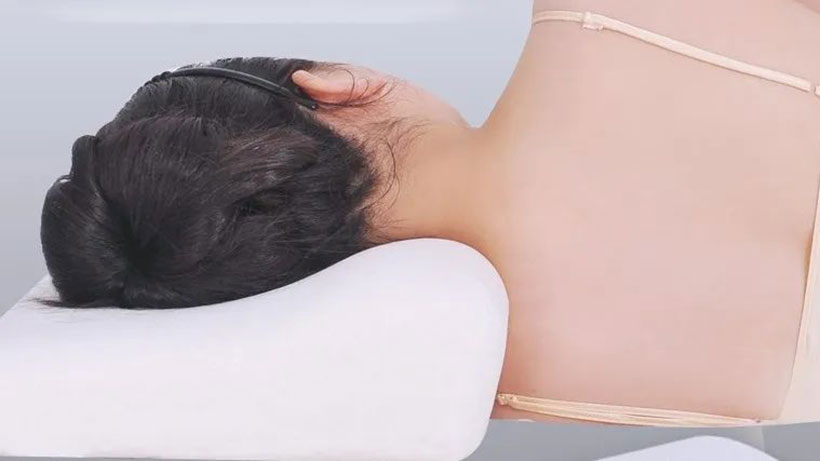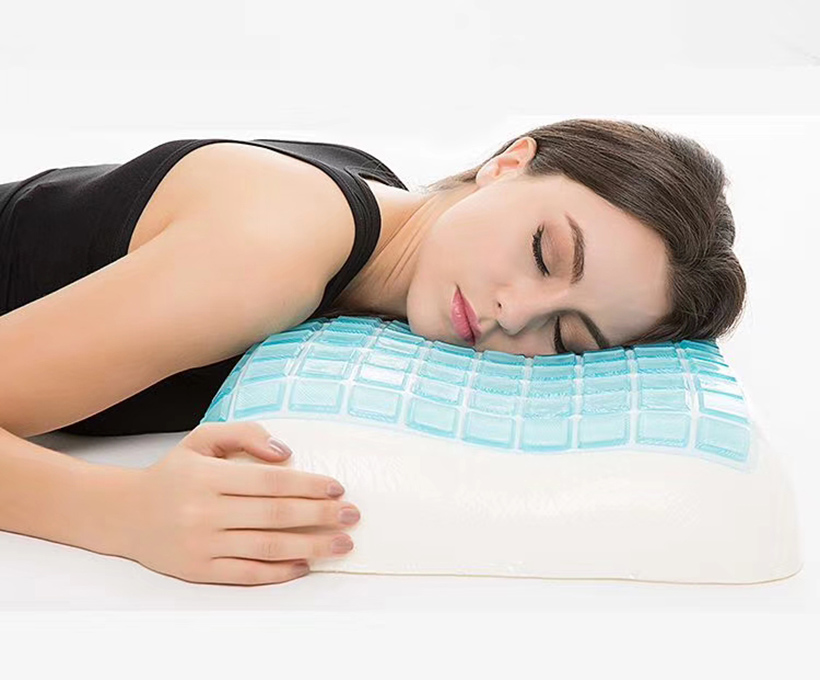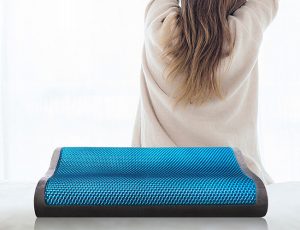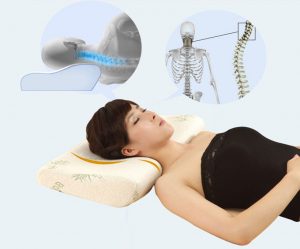A good sleep can effectively eliminate fatigue, relax the body, and facilitate the recovery of cervical spondylosis, so it is very important to choose a right pillow.

To choose the right pillow, you must first know the function of pillow. A pillow actually is used to rest our neck, not our head. It should be put under the neck between the back and the head, which supports the neck when sleeping.
Here I recommend an orthopedic neck pillow which can fix the neck pain caused by posture problems. Cervical pillows can be made of many different materials, like wood, bamboo, cloth, down, feather, polyester, soybeans, buckwheat, cassia seeds and memory foam. With the development of science and technology, the cervical pillow is more professional and scientific, and memory foam is the best filling material I’ve used.
Memory foam orthopedic neck pillows are specifically designed to relieve neck pain by:
- Providing better support to the cervical spine
- Keeping better alignment of the neck with the rest of the spine.

Memory foam cradles the neck;
Memory Foam pillow is also called viscoelastic pillow, because of its visco-elasticity, memory foam moulds to your neck when you put your head on the pillow. And when pressure and heat are removed from it, it bounces back to its original shape. It is unlike traditional pillows made of down, feather, and poly, they don’t flatten out with usage.
So, memory foam can provide a good support to your neck.
Ergonomic design for better support and alignment;
Because of its unique design, a neck pillow is able to provide consistent support to your neck when you’re sleeping.
When you rest your head in the sinking of the pillow, the protruding part provides support to the neck, minimizing stress on your cervical spine.
Further, the pillow is designed to keep good head and neck alignment with the rest of the spine at all times.
Over time, the neck heals and your pain disappears.
How to choose a right pillow for different sleepers?
1. Tips for people who sleep on their back:
Pros of sleeping on the back: Sleeping on your back can provide benefits including encapsulating spinal alignment, reducing tension headaches, relieving pressure points and back pain, reducing breakouts or wrinkles in people with sensitive skin, and reducing the risk of sudden infant death syndrome. People with back pain should feel comfortable sleeping on their backs, some people find this position reduces pain while others find it exacerbated, it all depends on the individual.
Cons of sleeping on back: People with sleep apnea should avoid sleeping on their backs, as this position is more likely to block the airway.
So get a pillow which is medium-firm and with a loft of 4-6 inches.
Also, put a wedge leg pillow beneath your knees. By simply raising the legs, your lumbar spine is in a neutral position, reducing the stress from it.
2. Tips for people who sleep on their side:
Pros of sleep on the side: Studies have found that sleeping on your side is generally better for you, promotes better digestion, relieves snoring, improves maternal and fetal health, and is also beneficial during pregnancy. Other potential health benefits include: spine support, brain health, lower back pain relief, heartburn relief.
Cons of sleep on the side: Sleeping on your side can put pressure on your shoulders and cause head and face tightness or pain. Studies have also shown that if you have carpal tunnel syndrome, sleeping with your hand pressed or bending your wrist can make your symptoms worse.
So get a pillow which is firm and with a loft of 5-7 inches.
Put a knee pillow between your knees. This can keep better spine alignment and prevents the upper leg from getting down onto the mattress.
And also it’s better not to sleep with your legs straightened out. Just curl up slightly to relieve press from the lumbar vertebra.
3. Tips for people who sleep on their stomach:
Pros of sleep on the stomach: Research has found that sleeping on the stomach may be beneficial for people with snoring and obstructive sleep apnea conditions.
Cons of sleep on the stomach: Sleeping on your stomach does more harm than good! This pose increases back and neck stress, which can lead to unnecessary chronic back pain.
Get a pillow which is soft and breathable and flat with a loft of 3 inches or less.
Place a soft pillow under your stomach to relieve the pressure from the lumbar vertebra and bring it into a more neutral position.
So, getting rid of neck pain and stiffness can be a long and hard journey. But once you get the proper pillow and correct your sleeping posture, you can say bye-bye to neck pain for the rest of your life.




